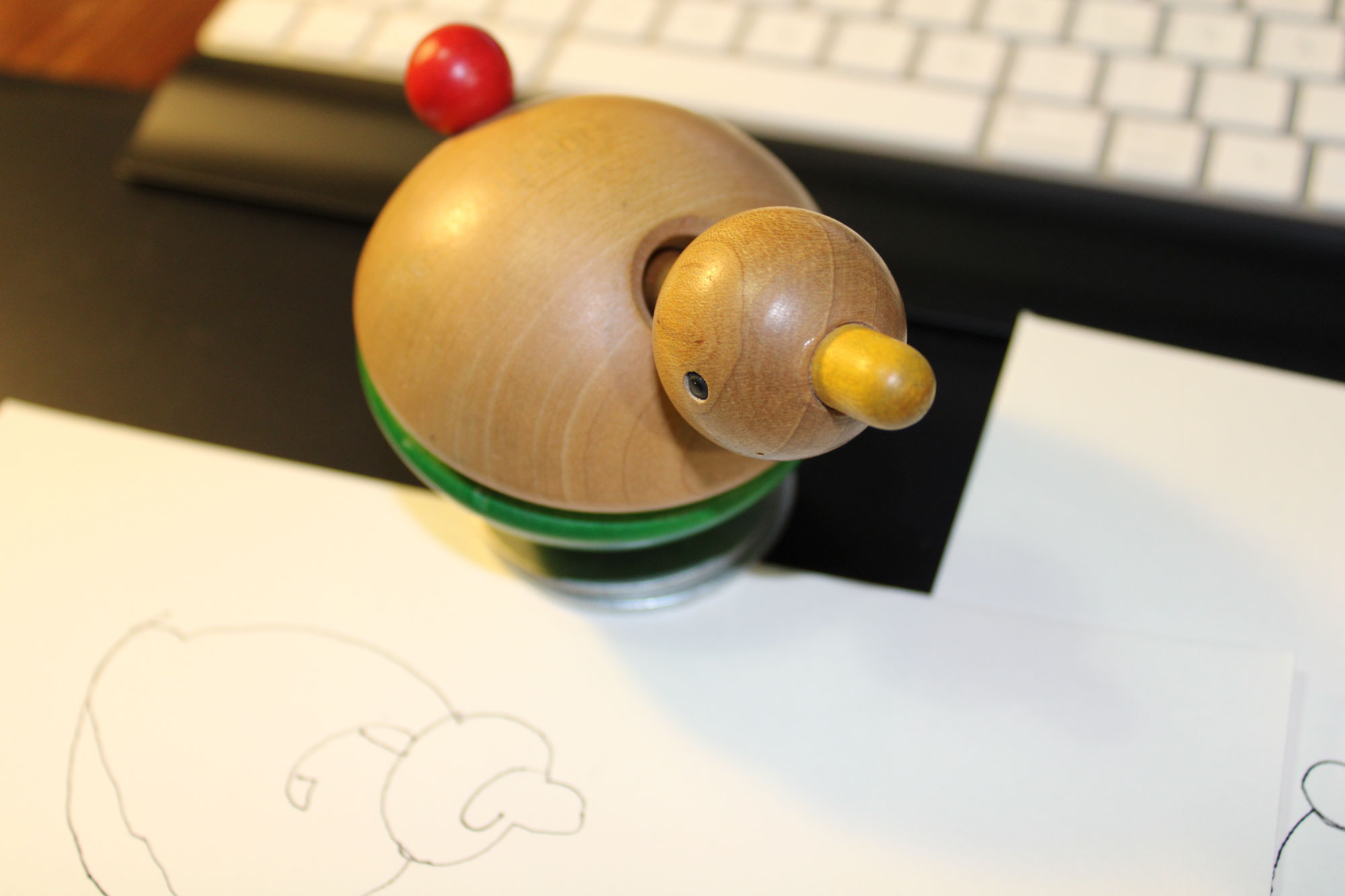
If you want to learn to draw, close your eyes
Does this sound familiar?
„I can’t even draw a straight line“
„I cannot draw“
„I loved to draw when I was young, but my parents wanted me to look for a real job“
Could these statements come from you? They are sad declarations, aren’t they? They are expressions of things I hear time and time again. They represent the desires of someone who went down that ‘straight and normal’ path, who feels regret in not living out their creativity and often I feel the deep sadness of the speaker.
I think that kind of sadness arises when you work against the person you are within. Yes, it is true. Working as an illustrator has not always been easy. Often you hear well meant advice from friends and family who are worried that you will become the epitome of the „starving artist“.
But is it right for you to let your soul starve? The worst years of my adult life were the three years that I didn’t pick up a pencil. I was mourning the death of my mother, who had passed away unexpectedly, and was struggling as a young mother with the challenges of raising two small children: My daughter slept only in 2 1/2-3 hour stretches, my son suffered from nighttime terrors, something similar to nightmares but even worse, because he wouldn’t recognise me and he couldn’t be comforted or touched until the storm in his head was over. I wasn’t in a good place. I took care of everyone else’s needs but disregarded my own.
And you know, it could have been so simple. Had I just picked up my pencils and let them glide over my paper perhaps I could have found a way out. But like many parents before and after me, I just couldn’t find the time.
The turning point.
I don’t know exactly when it was, but I know that it came to pass: I eventually picked up my pencil and began to draw and chasing the sadness out of my soul. When my son turned 3, I established my illustration business.
The Irony
When I was in high school, I was told that I could not draw.
But I knew then that I wanted to.
With paper and pencil I used my school summer vacation and reached that goal.
My teacher was amazed.
Do you want to learn to Draw?
You don’t need to be able to draw a straight line.
You can give yourself permission to draw – even if the words „Starving Artist“ are echoing in your head. Those words are someone else’s words. You can silence them.
You must draw, if that is what you want to do.
You can draw the familiar
Most people can draw things that they are familiar with. Think of a golf player. They can most likely draw a golf club, a tee and the 18th hole. The ice cream seller can scribble a likeness of an ice cream sundae and a book seller surely can draw a pile of books. These are objects that they are familiar with.
Try it out yourself.
Don’t think too much. Grab a pen or a pencil and a piece of paper – it doesn’t need to be good paper, scrap paper will do – and sketch something that you use every day or something you use for your favourite sport or hobby. Limit your time to one minute. The result might not be photorealistic, but you will recognise a similarity.
But it isn’t perfect…
That might be true, but you have started to draw. Congratulations!
If you want to learn to draw, close your eyes
Yes, you heard me.
Often we let ourselves get entangled in what we think we see and forget to really look.
„And how am I supposed to draw when my eyes are closed, smarty pants?“ That is a question many of my students have asked me. The answer lies in your hand.
Place a coffee cup or some asymmetrical object on the table. It needs to be heavy enough so that it doesn’t slip away or wiggle too much when you touch it.
Then tape down a piece of paper on the table and pick up your pen, pencil, marker, whatever, with your writing hand. Lay two fingers of the other hand and touch the contour of the object. This will be your starting point.
Now close your eyes
While tracing along the object’s contours with your fingers, draw the same movements on the paper. In a sense you are acting as a human pantograph. (A pantograph is a mechanical tool for reproducing scaled images) You will be drawing the lines as you touch the object.
When the contour of the object leads away from you, then make the same motion with your drawing tool on your paper. If you feel a curve, then follow the curve on your paper.
When you think you’ve explored all the contours of your object, you can open your eyes again.
But, this looks weird!
I was expecting that. If you drew a cup, for example, and the handle looks way bigger than the cup itself, that just means that you spent more time exploring the form of the handle than the body of the cup. That is just normal.
Are you ready for another try?
This time think of an object that you like, use daily or maybe on your favourite stuffed animal from your childhood. Close your eyes and visualise the same action. Draw while you feel the contours of your object that you imagining. You are visualising and drawing at the same time. Leave your eyes closed and let your hand learn to cooperate with your brain again. You don’t need any distractions, just take as much time as you need.
How was your result? Weird? Similar? Strange and similar at the same time? Post your results on Instagram with the hashtags #drawwithyoureyesshut #closeyoureyesanddraw, #zeichnemitdenaugenzu #augenzuundzeichne. Remember to tag me @hoffmanillustrates. Describe your object and how you felt while you were drawing it.
What is more important, the result or the road that leads to it?
For today I would say that the road you are on is more important than the destination. Because today you chose to take a step towards your goal of learning to draw.
Stay creative!




Leave a Reply